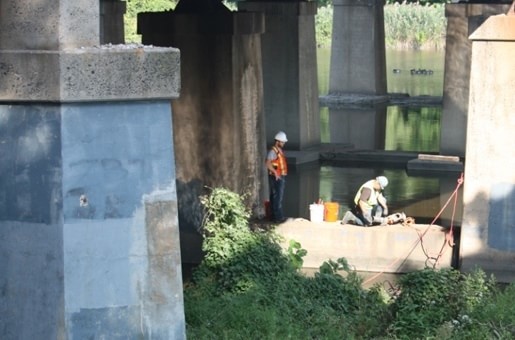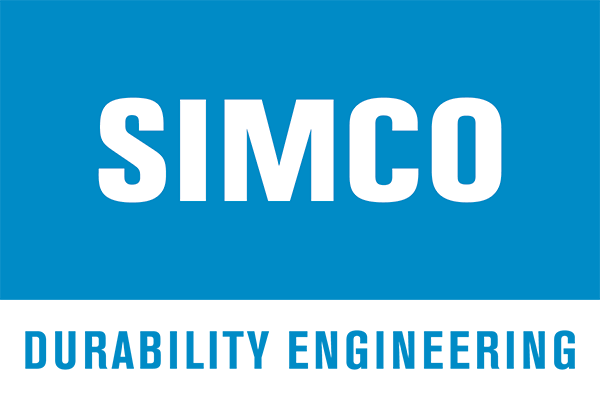
Our solutions
- Service-Life & Durability Design Engineering
- Infrastructure Preservation
- Materials Science and Engineering
- Litigations – Materials Expertise – Forensic Analyses
- Sustainability Engineering
- STADIUM® Technology Portfolio
- Laboratory Services
- R&D/Innovation
Featured projects
- NJDOT – Beach Boulevard Bridge
- Pulaski Skyway Bridge Deck
- Rutgers University (CAIT) – BRP
- NASA – Kennedy Space Center – Indian River Bridge
Investigation into the cracking of a newly-constructed bridge deck
Investigation into the premature failures of bridge deck repairs
Conduct comprehensive investigations, condition assessments and durability analyses of HPC concrete bridge decks
Condition assessment, service-life evaluation, and cost-optimal maintenance and repair strategy
Inspection & Condition Assessment
For owners and managers, decaying concrete structures not only represent a major safety issue but also impose a growing financial burden at a time of unprecedented budget restrictions. It is therefore imperative to find cost-effective solutions to improve the design of new construction projects and optimize the maintenance of existing structures.
INVESTIGATION AND IN-DEPTH ANALYSES OF DETERIORATING CONCRETE INFRASTRUCTURE
SIMCO’s team of engineering specialists and experts can travel anywhere to perform on-site inspections and offer in-depth insight into the often complex problems of deteriorating concrete infrastructure. SIMCO’s investigation techniques and methodologies used are always adapted in scope according to the type and size of the structure being investigated. SIMCO’s methodologies are applicable to any type of structure that is exposed to an aggressive environment; e.g., freeze-thaw, airborne chlorides, harsh temperatures, chemical attacks, etc.
Over the years, SIMCO has developed a unique approach in order to effectively evaluate deterioration mechanisms affecting reinforced concrete structures. SIMCO’s methodologies enable the selection of optimum intervention scenarios (both technically and economically) and the assessment of the level of maintenance that will be required in the short, mid to long term.
Based on the review of available documentation, SIMCO develops a deterioration matrix for each element under investigation, classifying the type of damage observed and the level of severity. For each element and associated damage classification, an in-situ activity (i.e., inspection and/or NDT) and testing plan is developed. An “end of service-life” criterion is also usually determined following a detailed analysis of the degradation mechanisms that could potentially affect the reinforced concrete structure.
STANDARD & SPECIALIZED TESTING PROGRAM
SIMCO will then develop a laboratory-testing program that will be dependent on the observed degradation mechanisms during inspection visit(s) and/or the review of available information. The proposed testing program will take into consideration the different elements, different construction periods, and different materials used.
Inspection and testing results are then correlated in order to establish the cause of damage for each element. SIMCO’s STADIUM® predictive modeling tool is used to determine the residual service life of the structure (if any) and investigate the impact of repair scenarios for the extension of its service life.
The primary objective in this type of investigation is to extend the useful life of the structure cost-effectively. SIMCO uses its unique technology and expertise in materials durability engineering to achieve the following objectives:
- Establish degradation mechanisms at work on the structure
- Characterize the concrete of structural elements in place
- Define the specific exposure conditions that each element is subject to
- Establish the residual service life of the structure without major rehabilitation
- Evaluate and compare the suitability of major rehabilitation techniques and long-term maintenance strategies on the basis of lifecycle costs analyses
OUR SERVICES
- Review and analyze available documents (construction drawings, conditions surveys, previous inspection reports, laboratory test results, etc.)
- Conduct visual inspections and document degradation phenomena observed on structure
- Develop a deterioration matrix for each element under investigation, classifying the type of damage observed and the level of severity
- Elaborate a testing program including coring instructions and non-destructive testing requirements
- Analyze results and evaluate repair scenarios to extend the service life of the structure
- Recommend the most efficient intervention plan based on lifecycle cost analyses

